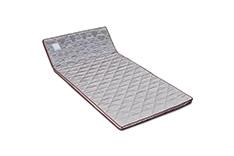Far-Infrared Ray and Its Effects on Stem Cell Self-Renewal Mechanisms
- Definition of Far-Infrared Ray (FIR)
Far-infrared ray (FIR) specifically refers to infrared radiation with wavelengths ranging from 5.6 to 1000 μm (Ikeda et al., 2005). Among these, the wavelength band of 4–14 μm is also known as "growth ray," which is believed to be effectively absorbed by biological organisms. FIR-based devices mainly utilize the thermal or non-thermal effects of FIR (Hamada et al., 2003).
• The thermal effect is primarily caused by the resonance between the energy differences in vibrational or rotational energy levels of molecules within tissues and the photon energy of infrared radiation. This resonance induces molecular vibrations or rotations, leading to collisions and, subsequently, heat release through non-radiation relaxation, returning to a lower energy state.
• The 9–10 μm wavelength within the FIR spectrum has been shown to influence the self-renewal mechanisms of human stem cells.} - Basic Concepts of Stem Cells
Stem cells are a class of cells with self-renewal and multipotency capabilities. They can divide to produce identical stem cells or differentiate into specialized cells. Based on their differentiation potential, stem cells can be classified as follows:
2-1 Types of Stem Cells
1. Totipotent Stem Cells: Present from fertilization until the 8-cell stage, with the potential to develop into an entire organism.
2. Pluripotent Stem Cells: Found in the embryonic stage, these cells can only differentiate into specific tissues or organs.
3. Multipotent Stem Cells: Capable of self-renewal and differentiation; they can be derived from newborns, umbilical cord blood, children, and adults.
4. Unipotent Stem Cells: Can only differentiate into a single cell type but still retain self-renewal capabilities, distinguishing them from non-stem cells.
2.2 Stem Cell Self-Renewal Mechanisms
Stem cell self-renewal ensures tissue stability and repair through various mechanisms:
1. Symmetric vs. Asymmetric Division
2.
• Symmetric Division: Produces two identical stem cells, maintaining the stem cell pool.
• Asymmetric Division: Produces one stem cell and one progenitor cell, which further differentiates into specialized cells.
3. Transcription Factor Regulation
4. Key transcription factors such as Oct4, Sox2, and Nanog are highly expressed in stem cells, ensuring their undifferentiated state and regenerative capacity.
5. Microenvironment and Signaling Pathways
6. The stem cell niche regulates growth and regeneration via pathways such as Wnt, Notch, and Hedgehog. - Effects of 9–10 μm FIR on Stem Cell Repair
3.1 Characteristics of Far-Infrared Ray
Far-infrared radiation (FIR) covers wavelengths between 5.6 to 1000 μm, with the 4–14 μm range known as "growth ray" due to its ability to be effectively absorbed by biological tissues. Technological advancements suggest that FIR at 9–10 μm can further activate stem cell differentiation with the following effects:
• Enhancing microcirculation, improving oxygen and nutrient delivery.
• Increasing intracellular ATP production, boosting cell activity.
• Regulating the immune system, reducing inflammatory responses.
3.2 Mechanisms of FIR in Stem Cell Activation
1. Cell Proliferation and Differentiation: FIR at 9.35 μm has been shown to promote mesenchymal stem cell (MSC) differentiation into osteoblasts, accelerating bone repair.
2. Angiogenesis Promotion: FIR enhances the expression of vascular endothelial growth factor (VEGF), improving local blood flow.
3. Reduction of Inflammatory Response: FIR inhibits pro-inflammatory cytokines such as TNF-α and IL-6, minimizing tissue damage. - Applications of Stem Cells and FIR in Tissue Repair
4.1 Nervous System Repair
• Neural stem cells (NSCs) can differentiate into neurons and glial cells, offering potential treatments for Parkinson’s disease, Alzheimer’s disease, and spinal cord injuries.
• FIR exposure increases neuronal survival, reduces oxidative stress, and promotes neuroregeneration.
4.2 Cardiovascular System Repair
• Cardiac stem cells (CSCs) differentiate into cardiomyocytes, aiding in heart disease treatment.
• FIR improves microcirculation and cardiac tissue regeneration.
4.3 Bone and Joint Repair
• Mesenchymal stem cells (MSCs) differentiate into osteoblasts and chondrocytes, useful for fractures and osteoarthritis.
• FIR at 9.35 μm significantly enhances MSC differentiation, accelerating bone tissue regeneration.
4.4 Skin Repair and Regeneration
• Epidermal stem cells play a role in burn and wound healing.
• FIR at 9–10 μm promotes collagen synthesis, shortening wound healing time. - Challenges and Future Developments in Stem Cell and FIR Therapy
5.1 Immune Rejection and Ethical Concerns
• Allogeneic stem cell transplantation may cause immune rejection, requiring strategies to enhance immune compatibility.
• Embryonic stem cells (ESCs) face ethical issues, while induced pluripotent stem cells (iPSCs) provide alternative solutions.
5.2 Cancer Risks
• The high proliferation rate of stem cells poses a risk of tumor formation, necessitating precise control of differentiation and growth.
• Long-term FIR exposure may affect DNA stability, requiring further research on its safety.
5.3 Clinical Application Challenges
• Standardization and regulation of stem cell therapy and FIR application need further development to ensure treatment efficacy and safety.
Conclusion
Stem cells possess remarkable self-renewal and repair capabilities, making them highly valuable in regenerative medicine. Specific wavelengths of FIR have been identified as an effective physical therapy for enhancing stem cell repair functions. With advancing technology, future research will likely overcome technical and ethical challenges, leading to more effective treatments for various diseases.




